Explore problem-solving in short-tongued bees in a post by local naturalist, Christopher Wren.
If you are a short-tongued bumblebee faced with a long flower you have a problem. You can’t reach the nectaries which are cunningly placed at the base of the flower to make you squeeze past the anthers and stigma(s). Unless, of course, you cheat. Comfrey is a very enticing flower but its sweet nectar is out of reach of bees such as this male Early Bumblebee (Bombus pratorum). His solution is to use a hole bitten in the side of the flower to steal the nectar without helping with pollination.
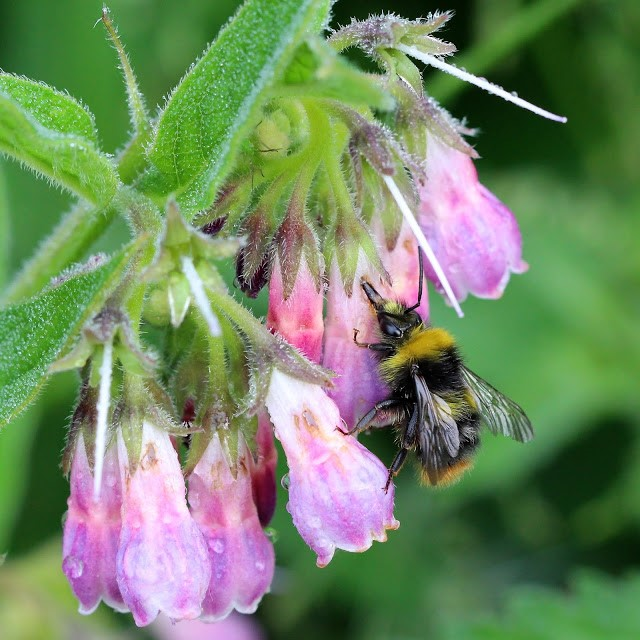
If you look carefully you will see that on some comfrey plants almost every flower has a tiny hole bitten in the side.

Other short-tongued bees that rob nectar include the Tree Bumblebee (Bombus hypnorum)
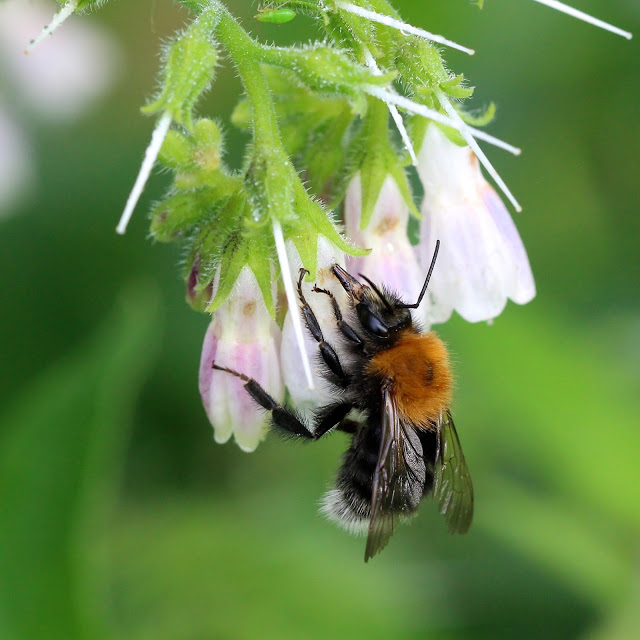
and the Common Carder Bee (Bombus pascuorum).

Worker bumblebees vary in size and the smaller ones can get right inside using the correct entrance, like this Common Carder Bee. It is interesting that there were no holes in the flowers on this plant.
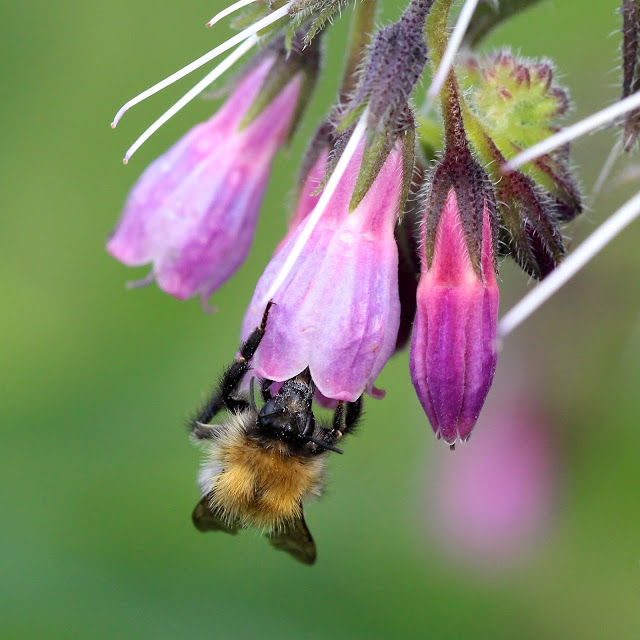
Long-tongued bees like the Garden Bumblebee (Bombus hortorum) don’t have a problem.
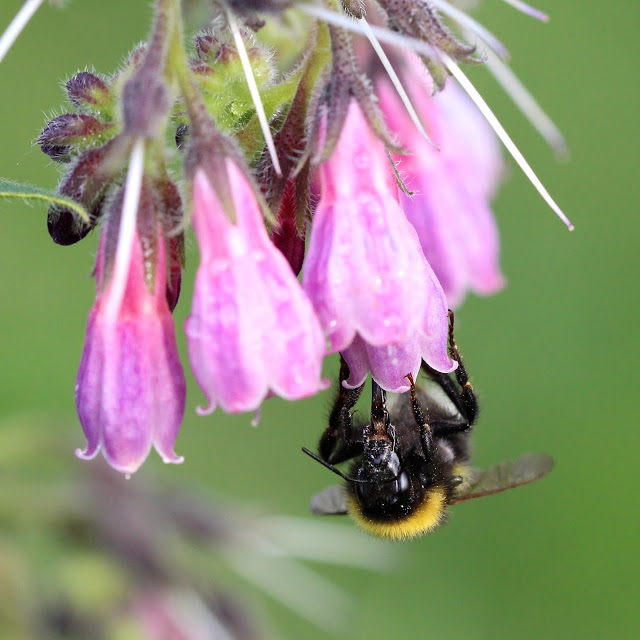
Surprisingly the robbing doesn’t seem to have much effect on a plant’s reproductive success. You can read more about the biology of nectar robbing here.
By Christopher Wren, local naturalist
All photos © Christopher Wren, 2020
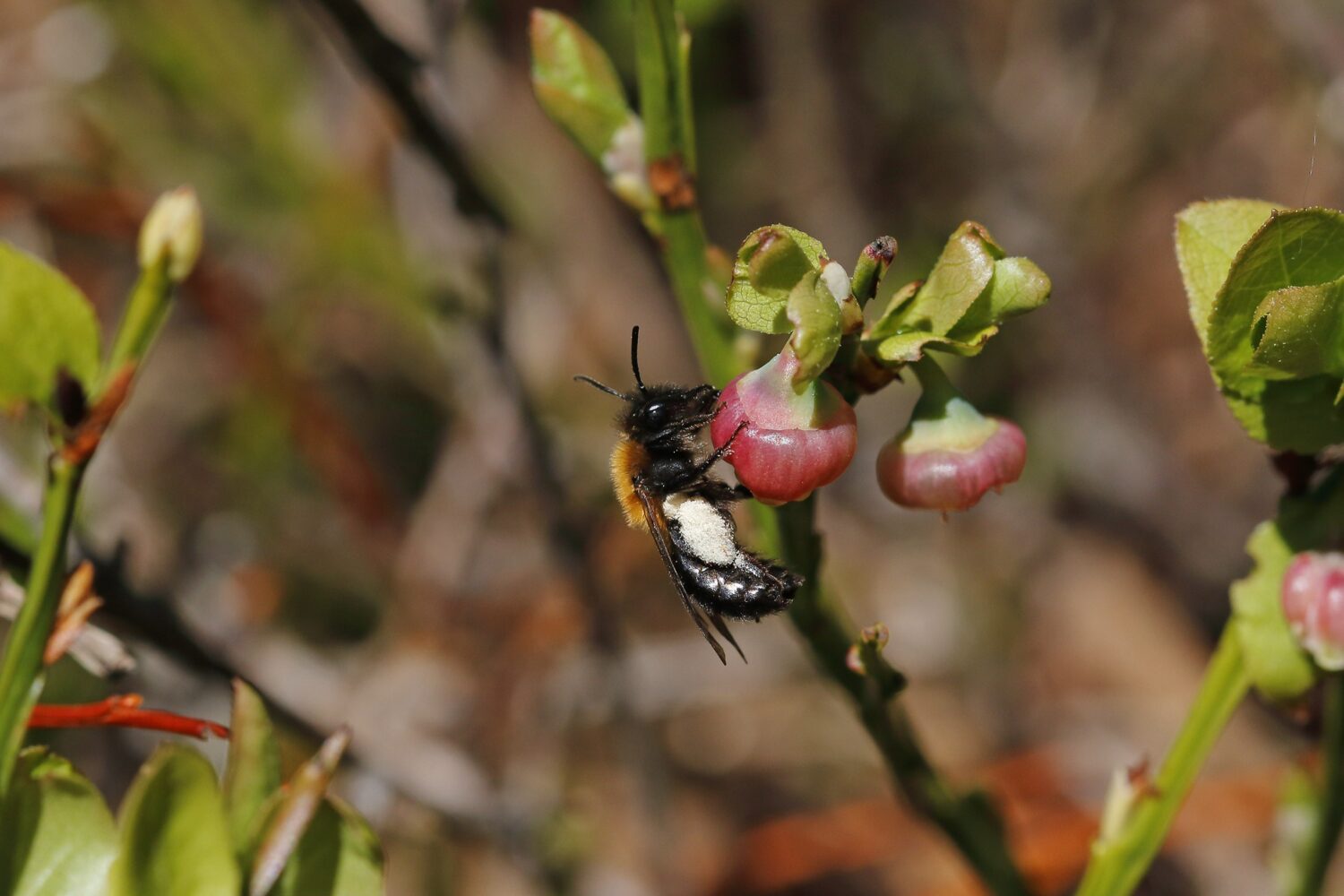
Take part in the North East Bee Hunt
Urban or rural, beginner or expert, we need your help to record eight distinctive bees across the North East this spring and summer.
Your records can add to our understanding of bees in the region and inform conservation and monitoring efforts.
Taking part is easy and every record counts, wherever you live in the region. Records of all bee species are encouraged.